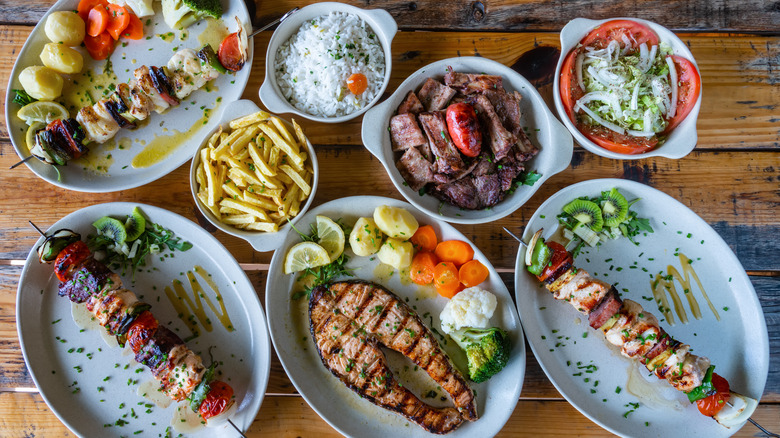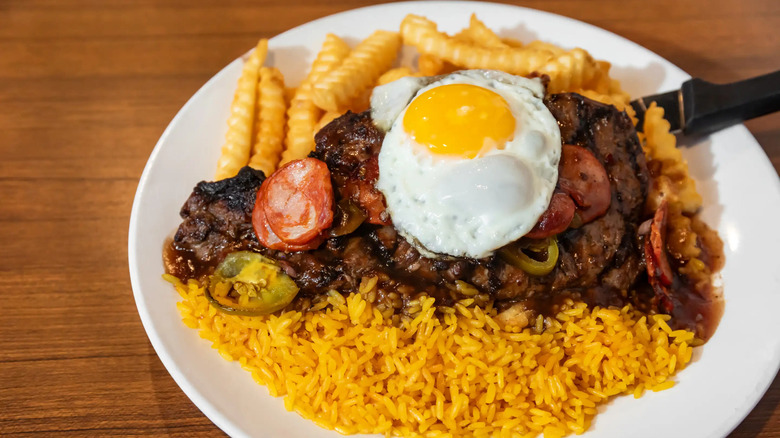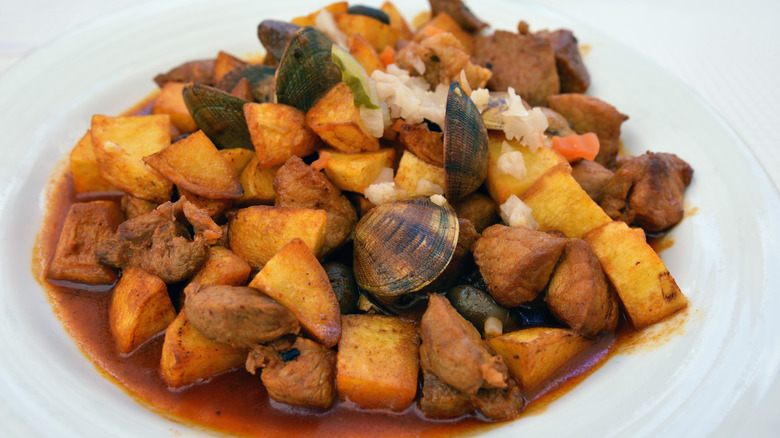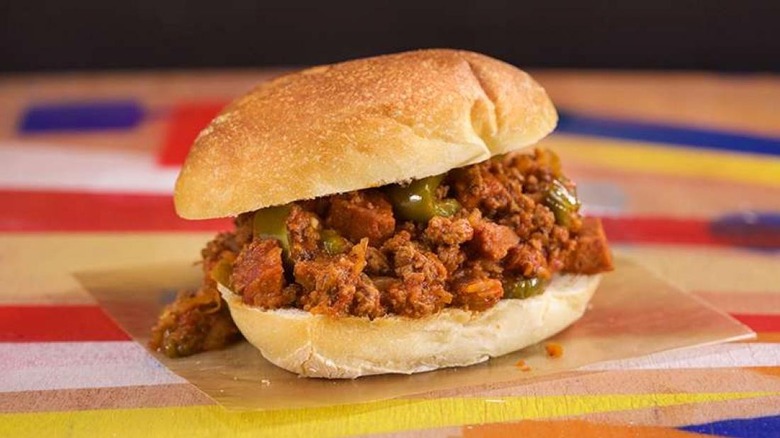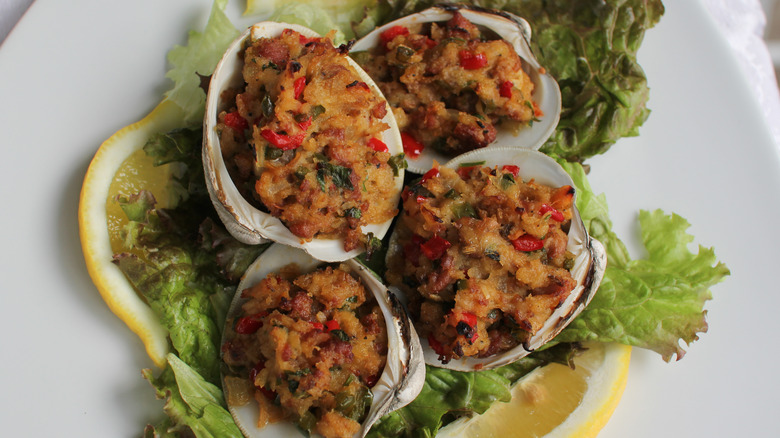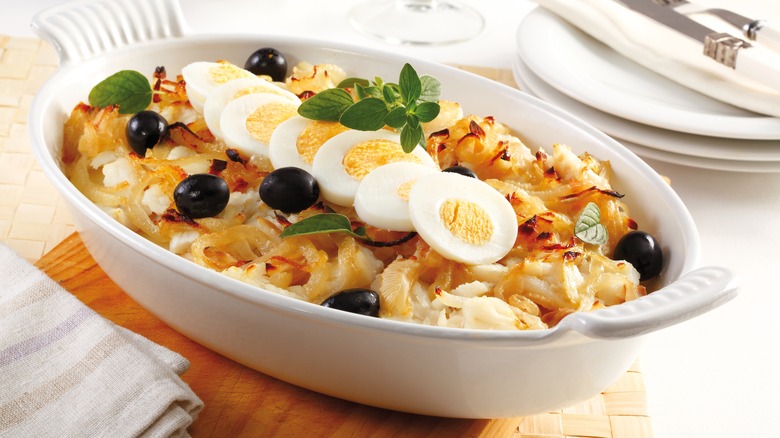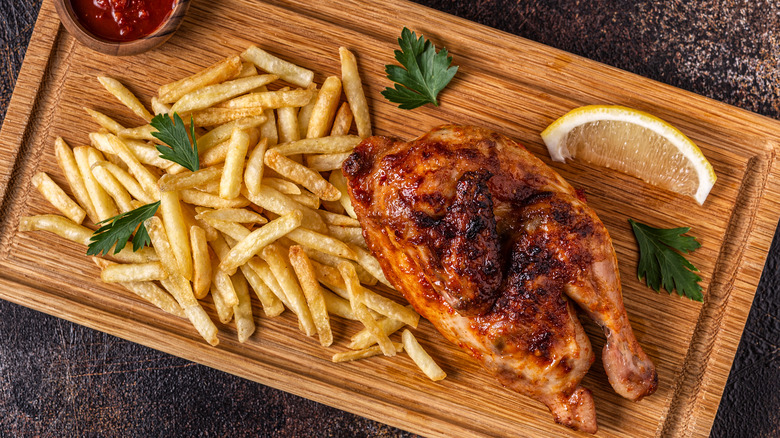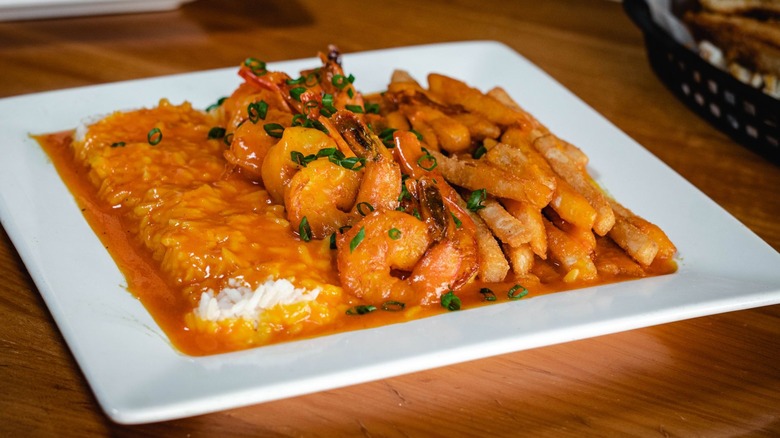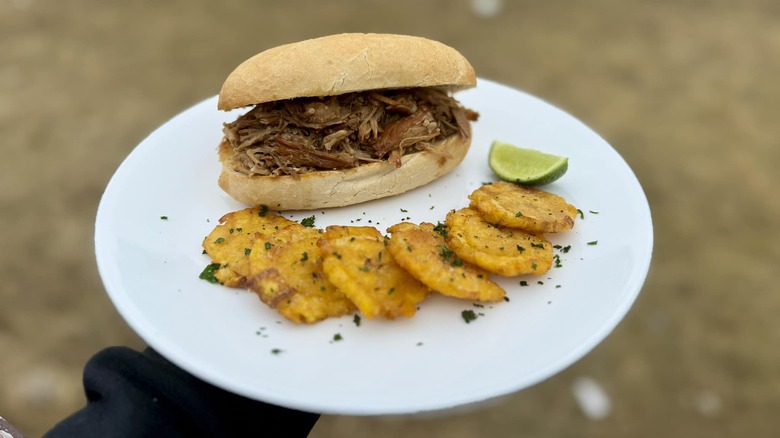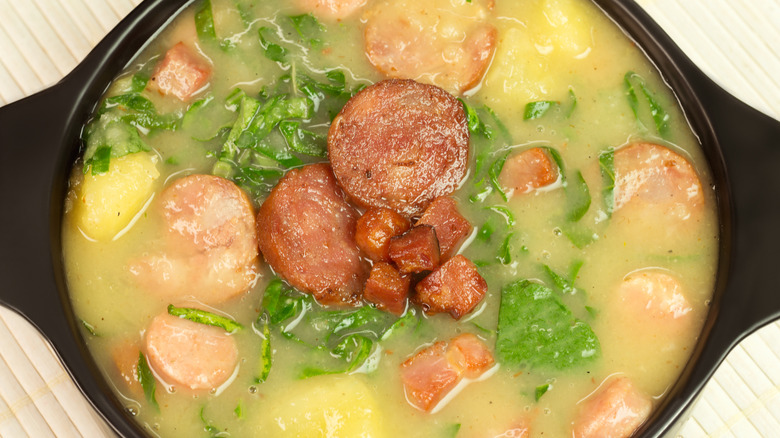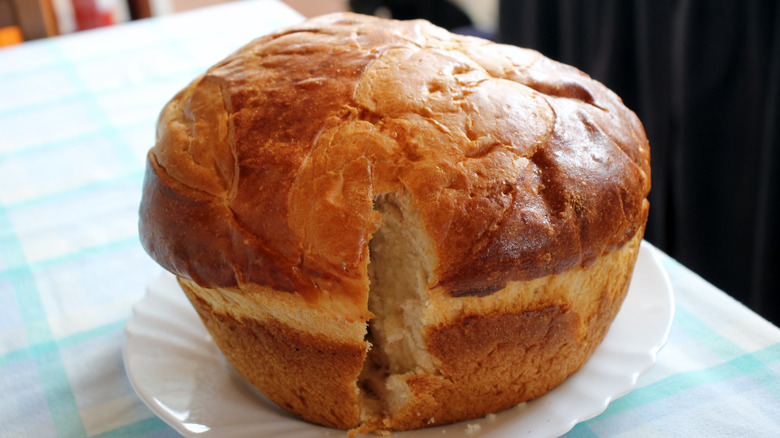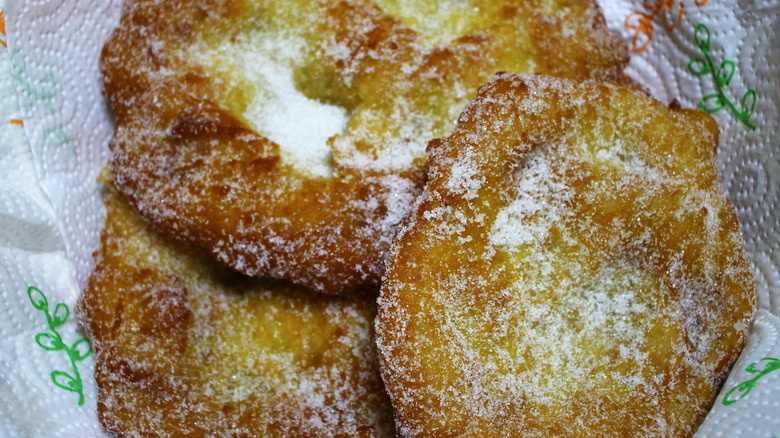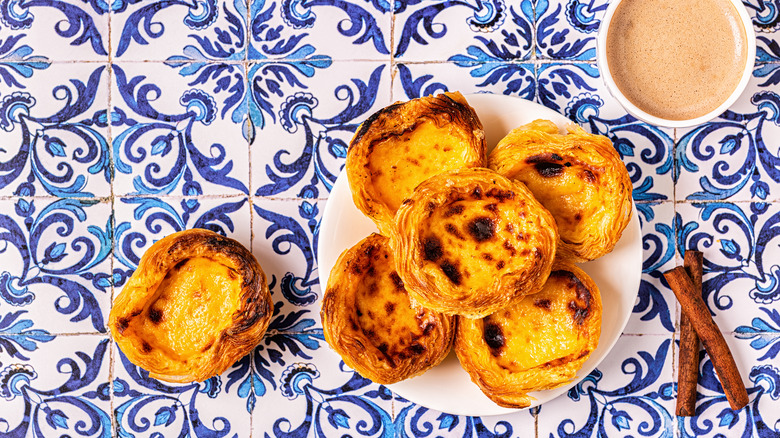Portuguese Dishes You Should Try At Least Once, According To An Expert
Portuguese food is incredibly unique, and the small country's culinary influence has been spread wide to nations across the world. Places like Brazil, Hawaii, the African islands of Cape Verde, and parts of New England are brimming with Portuguese influence and delicious food that's admittedly hard to find elsewhere.
Places like New Bedford and Fall River, Massachusetts, where I grew up, are filled with Portuguese people and delicious Portuguese food. Having lived in such a predominantly Portuguese community, I learned at a young age what differentiated a Portuguese steak from an American steak, that shrimp were meant to be served with their peels on, and not all donuts needed to have a hole.
It wasn't until later, when I moved to California and started exploring the culinary scene of Los Angeles, that I realized how unique Portuguese food is to Rhode Island, southern Massachusetts, and my small community of Fall River. These dishes might be new for most people, but they're some Portuguese favorites everybody should try at least once.
Bitoque - Portuguese steak
Bitoque, or Portuguese steak, is a common family dinner in Portugal and the United States. It's as hearty a meal as they come, with the toppings and sides holding just as much weight on your plate as the steak itself.
The meal stars a thin sirloin, usually marinated in garlic and spices before being cooked with a slight char on the ends. It's served over a bed of seasoned yellow rice, topped with grilled peppers, and a gravy made from the leftover steak marinade and dry white wine.
All of this is topped with either a lightly fried or sunny-side-up egg, which should be the first thing you cut into as you start your meal, letting the yoke's gooey middle spill over the meat and rice below. French fries or roasted potatoes on the side are usually salted and lightly drizzled with malt vinegar. The longer you savor this meal, the better the fries get as they become saturated in the juicy steak marinade.
Porco à alentejana - pork & littlenecks
Pork and littleneck clams give you the best of both worlds from Portugal's rich culinary offerings. Clams — off Portugal's western coast of the Atlantic — pair with pork raised in the country's vast, southern grasslands: the Alentejo.
Pieces of cut pork shoulder or pork loin are marinated in dry white wine, bay leaves, garlic, and pimenta moida – a spicy sauce made out of crushed and fermented red peppers that will be a key ingredient in a lot of dishes on this list. After sitting overnight, the pork is fried in fat, giving it a nice crispy sear on all sides. Small chunks of potatoes are baked as the pork cooks and then tossed into the same frying pan once the pork comes out. This gives the potatoes the same fatty flavor, letting them absorb any juices leftover from the pork. The petite littleneck clams are cooked and served — some with and some without their shell — in a big bowl with the rest of the ingredients.
The pork and potatoes meld together in the savory broth and will melt in your mouth if they haven't fallen apart on your fork. Bits of slightly salty clams make themselves known between bites of the heavier ingredients until the very last bite. Only then will you want to take your hunk of crusty bread to sop up what's left of the broth.
Chouriço and peppers
Chouriço (shor-EES-oh) is a pork sausage similar to Mexican or Spanish chorizo but is seasoned and cooked differently. It's a bit sweeter and less earthy than chorizo and often comes spicy, having been marinated in Portuguese pimenta moida. Chouriço is a staple in many Portuguese dishes and is easy to prepare since it comes pre-smoked and ready to eat.
Chouriço is like a major food group in southeastern Massachusetts and parts of Rhode Island. You can find the smoked sausage in everything from pizzas to egg rolls, both in traditional sausage link slices or ground up into small crumbles, which is how you'll want to prepare this meat for chouriço and peppers.
Small chouriço and pepper finger sandwiches are popular and often served at parties or events where you need to feed a lot of people. The chouriço is heated in olive oil with chopped green bell peppers, onions, garlic, and wine. It simmers to create a crumbly meat sauce that you can serve in a bowl or a sandwich. If you have any chouriço leftover you can use it to elevate your charcuterie board.
Stuffed quahogs
Quahogs are large, hard-shell clams. Their name derives from the native Narragansett tribe that once used their feet to dig for them throughout Massachusetts and Rhode Island. Stuffed quahogs, lovingly called "stuffies" by locals, are a popular Portuguese-American appetizer served in the summertime. Like oysters, they're usually paired with wine as an appetizer or quick bite.
The clam bellies are removed from their large shells and cut into smaller pieces. The rest of the mixture resembles Thanksgiving stuffing with crumbles of almost-stale bread, spicy peppers, and bits of chouriço. The clams are mixed in with the rest of the filling and stuffed back into the clamshell. The bread used to make the stuffing is typically Portuguese rolls called papos secos, small airy loaves with a light and crispy exterior. They can also be made with day-old Italian rolls if you cannot find Portuguese bread in your area.
You eat these with a small fork directly out of the clamshell. They have a warm, almost earthy flavor with intermittent bites of meat and chewy clam. Stuffed quahogs can also commonly be found pre-made and wrapped in plastic in specialty stores or fish markets across New England.
Bacalhau à brás
Bacalhau, or salted cod, is Portugal's national dish. With the entirety of the country's western coast touching the Atlantic, most of the country's diet relies on fish. Portuguese people eat more fish than any other country in the European Union and are ranked third in the world.
There are countless ways to make bacalhau. This version, bacalhau à brás, pairs the popular fish alongside eggs and potatoes. The salted cod is shredded into bitesize pieces and fried in fat alongside thinly sliced potatoes. After frying, the fish and potatoes are layered with onions into a casserole dish. Scrambled eggs are poured into the mixture, binding the pieces together while baking in the oven. Before serving, bacalhau is traditionally topped with more slices of hardboiled egg and cold pitted black olives.
While bacalhau may sound like the most unusual plate on this list, the flavors mesh together beautifully. The salty fish cooks down with the hearty, warm potatoes and saffron seasoning for the ultimate comfort dish in the colder months or any time of year.
Piri piri chicken
This may be the most popular Portuguese dish across European countries, thanks to the fast-casual chain Nando's. Piri Piri, or the African bird's eye chili, is the pepper used to make hot sauces that flavor this roasted, grilled, or fried whole chicken.
Smoky and somewhat spicy, piri piri chicken mixes hot chili with red wine vinegar, paprika, and garlic to give the chicken a lovely roasted red color. Adding bay leaves to the meat marinade gives the peppery, spicy sauce an earthy flavor that blends beautifully into the charred chicken. A whole bird is usually cooked spatchcocked, halved, and served alongside several sides like rice, potatoes, or french fries.
However, this meal can easily be made with a deconstructed chicken or any specific parts of the chicken you prefer. Though grilled or fried are preferred, a few thighs baked in the oven make for an easy and flavorful piri piri chicken.
Shrimp Mozambique
Shrimp Mozambique is a buttery, saucy dish served over a bed of white or yellow rice. The meal gets its vibrant orange color from the piri piri and saffron (or sazón) seasoning, which flavors the shrimp and marinade. The shrimp is cooked and served unpeeled, letting the sauce soak up underneath the soft shell, which you remove one by one as you eat.
Butter, onion, garlic, saffron, hot peppers, dark beer, and dry white wine are cooked with as much or as little piri piri hot sauce or pimenta moida as you'd like. The spicier, the better, in my opinion. The shrimp are sprinkled with more sazón or saffron before cooking in the warm broth. Fresh saffron adds a ton of sweet, earthy flavor to this meal, making it stand out as one of the best on this list.
If shrimp isn't your thing, this dish is just as commonly made with pieces of white meat chicken breast. Prepare the same way: Cut and cook the chicken before making the broth in the same pot. Serve either shrimp or chicken with crispy fries or thin, round potatoes.
Caçoila - pulled pork
Caçoila (ka-SIR-la) is a slow-braised pork that originated in the Azores, an island off the coast of Portugal. Caçoila is the Portuguese version of American pulled pork — shreds of juicy, tender, marinated meat perfect for sandwiches or in a bowl.
Instead of sweet and tangy barbecue sauce, though, caçoila is seasoned with a dry rub mixture of paprika, cinnamon, allspice, garlic powder, and bay leaves. It's then marinated for hours in a large pot with vinegar, wine, pimenta moida, and fat like butter or lard. You'll taste a hint of citrus in the flavorful shreds of meat, brought on by adding an orange peel or small pieces of lime into the pot before it's finished cooking.
Like chouriço and peppers, caçoila is best served at parties or gatherings. The meat is stuffed into mini Portuguese rolls — or papos secos — and devoured in just a couple bites.
Caldo verde - kale soup
Caldo verde, or Portuguese kale soup, is a meal that originated in Portugal and was meant to feed a village — literally. Traditionally, you would throw anything available into a large pot. Now, it's almost as easy to make when feeding yourself or your family.
Caldo verde usually includes kale, potatoes, chouriço, diced tomatoes, cannellini beans, and red kidney beans. Kale plays the leading role of the dish and is sometimes pureed into the broth to make the soup appear more green. A regular chicken or vegetable broth works too, with an additional heaping handful of kale thrown in shortly before serving. Collard greens are another good substitution for kale, as both greens are commonly grown and used in soups in Portugal.
Chouriço or other sausages are optional in this dish to make it fully vegetarian. If you're using chouriço, it's typically made with slices of the sausage links as opposed to ground meat. Waxy yukon gold potatoes are best, and will soften quickly in the boiling broth.
Massa Sovada - sweet bread
Massa sovada, a Portuguese sweet bread literally translating to "kneaded dough", is a large and airy loaf of round bread that is a popular traditional gift around holidays like Easter and Christmas. In largely Portuguese-American towns like Fall River and New Bedford, Massachusetts, you can find these massive baked goods all year round in specialty bakeries. They're also famously popular in Hawaii, and miniature versions are commonly sold in grocery stores around the United States, packaged as Hawaiian rolls.
Though the bread's slight sweetness tends itself for dessert, massa is also commonly eaten for breakfast. Big wedges of the loaf are cut and can be toasted, grilled, or served as-is with butter or jam. They also make an incredibly rich and delicious French toast.
Massa sovada is made with butter, sugar, eggs, flour, and yeast. If you attempt to make this, be sure to use the correct flour as not all are created equal. For special occasions, particularly the Easter holiday, bakeries often place a boiled egg sticking out the top in the middle of the loaf.
Malassadas
Malassadas are another type of sweet bread, but this one is most certainly a dessert. These Portuguese donuts are similar to the fried dough you would find at a fair, topped with sugar and cinnamon. Made fresh and served warm, they're soft in your hand and fall apart in your mouth. Usually small and spongey, they're unlike any donuts you've had before and will leave Dunkin' shaking in their boots.
These Portuguese donuts originate from the island of the Azores and, like many other foods on this list, including massa, became popular in other parts of the world where Portuguese people settled. In Hawaii, they're typically stuffed with cream or jellies. Cape Verde has mini donetes that are made similarly to malassadas, but resemble more traditional donuts.
Originally, they were solely made for the festival of Carnaval in Portugal. Today, they're still mainly enjoyed during holidays and holy feasts. They're best eaten fresh, as they're quick to lose their pillowy softness, but should be enjoyed a few days after making.
Pastéis de nata - egg custard tarts
Pastéis de nata are a flaky, gooey pastry that have been around for over 300 years and are still enjoyed today by Portuguese people and others around the world. Made from just a few simple ingredients, they're incredibly popular and typically prepared the same way no matter where you eat them. You may have even seen them at your local bakery, which is convenient as they can be tricky to make just right at home.
These bite-sized treats are best enjoyed fresh and are made with a lot of butter, flour, egg yolks, and some cinnamon. The crispy, crusty outer shell holds inside all of the oozy goodness of the sweet yellow custard. If they are fresh, you should hear the satisfying crunch of the pastry shell splintering when biting into them. The warm custard middle rushes out, but you won't want to waste a drop as it drips onto your fingers. You can see the tell-tale sign of a pastéis de nata by the slightly burned marks on top. Religiously, they're not done baking until they have just a few small charred bits bubbling up.
